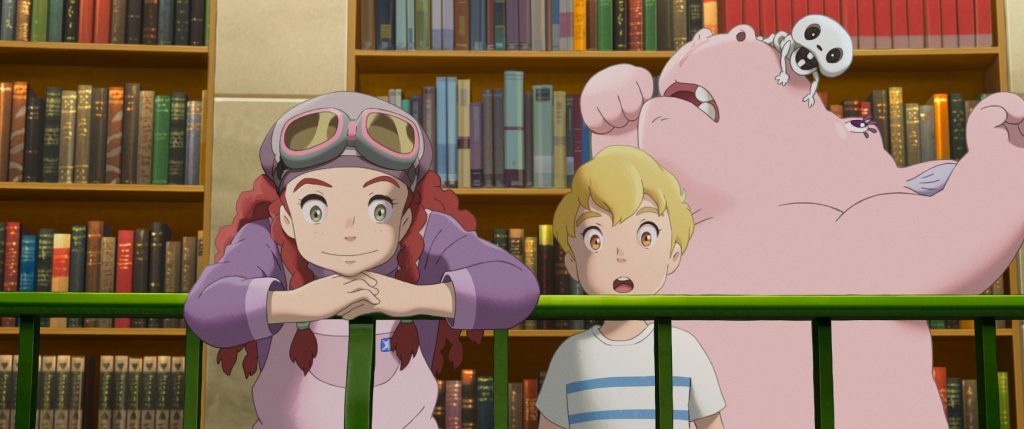2024 appears to be the year of the imaginary friend. From the family dramedy IF to a Blumhouse horror flick, films lately have taken a look at what happens when make-believe pals get a little more real.
Now, we have a new entry to the premise: the animated feature The Imaginary. (Again, not to be confused with Imaginary, no “The.”) The film comes from Studio Ponoc, founded in 2015 by former Studio Ghibli producer Yoshiaki Nishimura. Nishimura wrote and produced The Imaginary, which also comes from director Yoshiyuki Momose, an animator on Ghibli’s Spirited Away.
The Imaginary is based on the award-winning novel of the same name by A.F. Harrold and illustrated by Emily Gravett. It follows Rudger, the companion imagined up by young Amanda to share her thrilling make-believe adventures. When Amanda is suddenly injured and hospitalized, Rudger finds himself in the Town of Imaginaries – a place where forgotten Imaginaries live and find work.
From there, Rudger befriends some fellow Imaginaries who show him the ropes and ultimately help him try to find his way back to Amanda. But bridging the gap between the Imaginary world and reality requires following certain rules. And to complicate things further, the ominous Mr. Bunting (along with his own creepy Imaginary) wants to capture Rudger before he reunites with Amanda.

As a piece of animation, The Imaginary is undeniably a triumph. There’s obviously an incredible attention to detail here. Amanda’s home brims with life, from her cluttered and kid-messy bedroom to the shelves of the downstairs bookstore run by her mother. I loved the way the film used animation to show the real world, the imaginary world, and the way the line blurs between the two in this story. When Amanda and Rudger play make-believe in her room, you can literally see how a cardboard box transforms into an ox-drawn sleigh in a winter wonderland. The way The Imaginary uses animation to literally bring children’s imaginations to life feels charming and inventive.
Of course, animation is also the perfect medium to bring some fun characters to life. When Rudger enters the Town of Imaginaries, we get to see a bunch of different characters as kids might imagine them. They even have some delightful names; special shout outs to a real cat named Oven, an imaginary dog named Fridge, and a tiny skeleton named (what else?) Crusher-of-Bones.
The film also introduces a villain with a creepy imaginary sidekick. Mr. Bunting uses his oversized nose to literally sniff out Imaginaries — intent on gobbling them up — all while accompanied by his own Imaginary, who bears a striking resemblance to the girl from The Ring. (Yikes!)

Unfortunately, the impressive aesthetic and attention to detail in animating the world of The Imaginary didn’t seem to always translate to the story itself. The exposition often felt clunky, and the story didn’t always flow naturally. It can get a little too caught up in over-explaining its world, forgetting that imagination fundamentally doesn’t require so many rules. I also wanted to see more of Mr. Bunting; it seemed like he had a lot of unrealized potential as a villain. (As did his spooky Imaginary sidekick.)
Still, the animation brings plenty of magic and whimsy to the world, making The Imaginary one to watch. In a year of projects about imaginary friends, this has been my favorite so far.
The Imaginary premieres in select theaters June 28. It will then debut on Netflix on July 5.

![The Imaginary: Studio Ponoc Delivers A Beautifully Animated Feature [Review]](https://thathashtagshow.com/wp-content/uploads/2024/06/The-Imaginary-review-1280x640.png)




